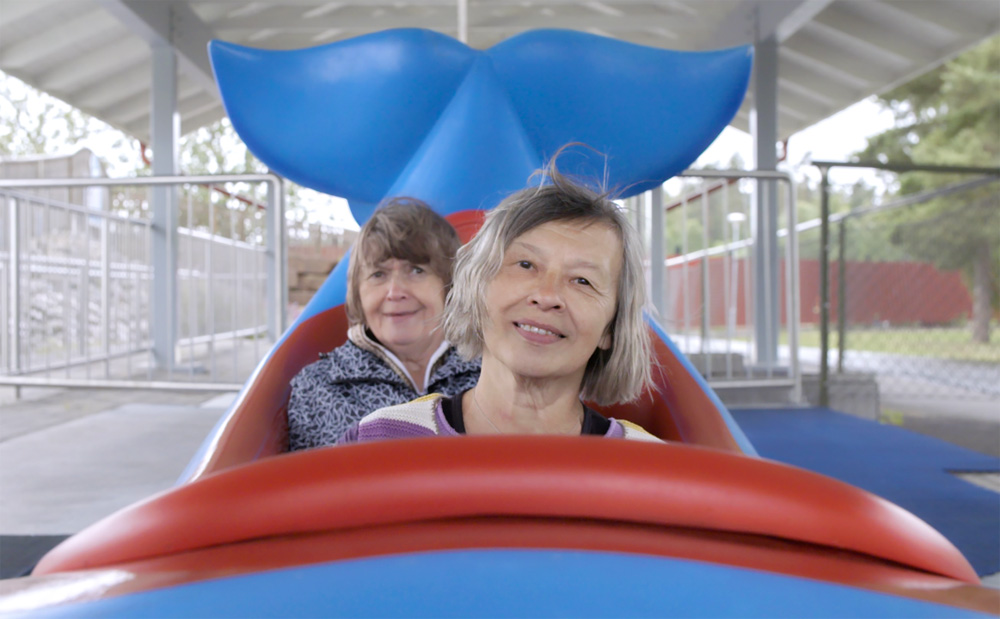There is mischief afoot from the very start of “The Gullspång Miracle” as director Maria Fredriksson can be heard off-camera guiding sisters Kari and May into a kitchen in what will later appear like the only time she’s ever got full control over the wily story. Asking them where they once stood in a kitchen to observe a painting that led to an epiphany that they may have a sister they never knew of before, she’s having trouble getting Kari and May to hit their marks and sounding natural as they repeat the same take when her main subjects clearly have ideas of their own about how to do things.
Only in retrospect, Fredriksson could know this might be how it was going to go after receiving a voicemail about the “miracle” the sisters experienced as they went apartment hunting, wanting to tell the world of how they believed they may have found their long lost sister Astrid, who was thought to have taken her own life, when the arrangement of paintings recalled her memory and the seller named Olaug — but will answer to Lita, as was Astrid’s nickname — appears to bear a physical resemblance. These may all just be coincidences, but it’s easy to get caught up in the same enthusiasm that has Kari, May and Lita do, all looking for new experiences as they head towards their golden years and while a revelation that they could all be related would be a confirmation of Kari and May’s devout Christian beliefs, Lita is inclined to believe she is their long lost sister when it brings a bit of excitement to her life, in spite of any inconvenient details she might know that get in the way of a good story.
This disparity can only make a good story better in “The Gullspång Miracle” when the closer the three get to one another, the more it looks like they’re accepting of the idea they’re family for reasons other than the facts in front of them. With editors Mark Bukdahl and Orvar Anklew, Fredriksson manages to keep an airy tone even as the story extends further and further into darker territory, cheekily zigzagging across a map of Norway as her crew does to find more unsettling elements regarding Olaug’s birth where the thought she could be a twin is given credence by families in Scandinavia hiding such siblings from Nazis who desired them for experimentation in 1940s and Astrid’s death is shrouded in mystery, with the film constantly referring back to a VHS tape that could be read in a number of different ways as to her state of mind shortly before her passing and Olaug coming to question what actually happened.
Fredriksson is wise to set up “The Gullspång Miracle” as she does when she becomes more of a character in the film than she’d probably like to be as the film evolves, with her role as an intermediary between Kari, May and Lita increasingly strained when initial excitement over their potential blood bond gives way to the realization that whether or not they share a family tree, they might not have much in common otherwise and when the irresistible premise surely would’ve lured crews up for uplifting human interest piece on the nightly news, it seems to be a small blessing in and of itself that the sisters called a documentary filmmaker instead that could grapple with the messy implications of a story that could only be told with time. While Fredriksson does the engaging work of keeping the audience guessing, she makes the most of the opportunity to get at larger questions about human nature.
“The Gullspång Miracle” does not yet have U.S. distribution.




